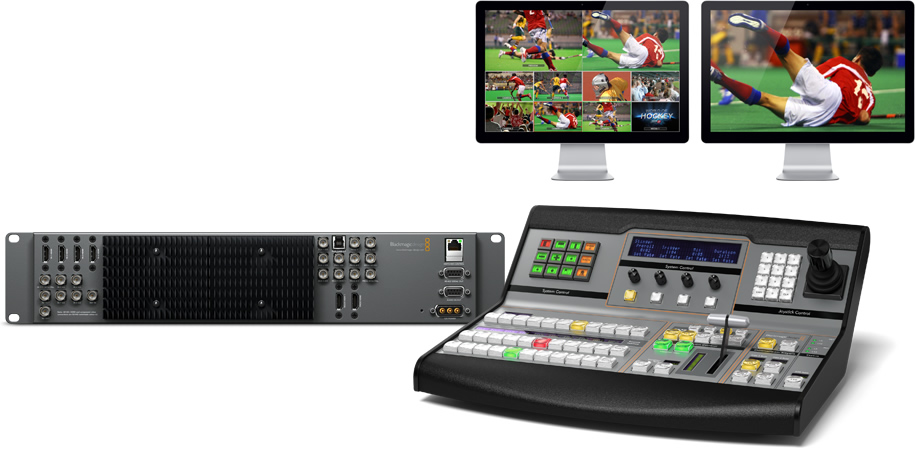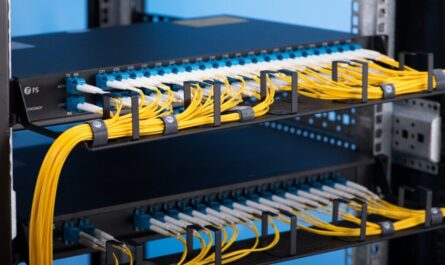Video Switching Technology
Broadcast switchers are designed for live television production and allow producers, directors, and technical operators to switch between multiple video sources in real-time. Early switchers relied on mechanical video switching technology using physical connections to pass signals between inputs and outputs. Modern switchers have transitioned to digital video routers which use microprocessors and computer control surfaces to route signals internally in the production router and switcher matrix. This digital video switching provides greater routing control and flexibility compared to antiquated hardwired mechanical switchers of the past.
Switcher Control Surfaces
The control surface is the interface that operators use to manually control the routing of video and audio sources during a live production. Traditional switchers used physical buttons to manually route sources, while modern control surfaces feature LCD monitors and touchscreens with software-defined keys and menu options. Larger production switchers have dedicated control surfaces that can be located close to the technical director or producer’s position for ergonomic control. Some advanced switchers also offer redundant backup control surfaces and mobile apps to provide flexibility over multiple locations. The control surface design must support fast, intuitive operations critical for live switching decisions made under tight deadlines.
Input-Output Configuration
Broadcast Switchers include numerous video and audio inputs that can be routed to various program and preview outputs. A typical configuration might include 12-24 mixed SDI and HDMI video inputs, along with 8 embedded audio inputs paired with each video source. On the output side, there are usually two primary video paths—the program bus takes the live on-air feed while the preview bus contains the upnext source. Additional secondary and tertiary outputs can then feed feeds, recorders and external monitors. Larger production models may expand the I/O counts substantially depending on the complexity of the live show.
Mix/Effect Features
While basic switchers can only cut between sources, modern broadcast switchers integrate advanced production features beyond simple switching. One essential feature is mix/transition effects which allow dissolving, wipes and other transitions between the program and preview sources. More advanced switchers support sophisticated multilayer effects combining multiple video sources. Key features enable chromakey composites with virtual sets. Some high-end modular switches even integrate 3D graphics systems and clip servers directly within the frame. Such features empower technical operators and producers with powerful tools for dynamic live presentations.
Multi-Definition Support
As video standards have transitioned from SD to HD and now 4K, broadcast switchers must support all major formats from analog to high definition. Early switchers were limited to SD-SDI, but modern units fully accommodate HD-SDI, 3G-SDI, and even 12G-SDI or quad-link 3G-SDI for next-generation 4K/UHD content. Advanced routing switchers are also able to up, down and crossconvert between SD, HD and Ultra HD definitions seamlessly during a live production. Multi-image processing allows high-resolution sources to be distributed as needed to heterogeneous studio infrastructures not yet fully converted to a single video standard.
Production Automation
While manual control will remain essential for live switching, broadcast switchers are increasingly integrated with external production control systems. This allows transitions, graphics plays and other tasks to be triggered automatically by the larger automation software. For example, a newsroom computer system like iNews or Octopus could fire playlist cues calling router crosspoints, graphics devices and audio console presets all at once. This streamlines the technical operation and improves pacing of fast-turn automated programming. Several switcher models can be directly controlled over industry standard protocols like Ross CrossPoint and Grass Valley Kayenne to maximize such automated workflows.
Remote Production Capabilities
The rise of remote and outside broadcasting necessitates new switcher feature-sets. Some advanced production switchers now support transporting I/O and external control over IP networks rather than relying solely on baseband SDI and router cabling. Certain models can locate key hardware components like router frames, processor units and even control surfaces in physically separated locations while still operating synchronously. Others implement browser-based control interfaces accessible from anywhere. Combined with integrated scan converters and multiviewers, these new IP-centric switchers enable truly flexible production between studios and remote venues limited only by upload speeds.
Hardware Reliability
Given the mission-critical role of Broadcast Switchers reliability is paramount. Broadcast-grade equipment must withstand punishing 24/7/365 operation in tough TV production environments. Leading switcher manufacturers emphasize rigorous testing, component-level redundancy and field-proven mechanics to deliver maximum uninterrupted uptime. Rigid chassis, redundant power supplies and fan systems are among the design features maximizing reliability. Modular architectures allow online component swapping without disrupting the entire live signal path. Front-accessible architecture streamlines routine maintenance and repairs between transmissions. Together, these traits enable switchers to maintain rock-solid reliability on the air for years on end.
Switcher Technology Future
As IP networking, virtualization and cloud technologies continue their disruption across many industries, broadcast switchers will likely continue their transition away from specialized hardware in isolated facilities. The emergence of software-defined routing and processing could see switcher functions fully migrated to virtual machines distributed across microservices frameworks in the future. Cloud-based production may centralize control in software-defined studios while distributing I/O onto-premise as needed for specific events. IP connectivity will also vastly expand feasible production locations and enable augmented reality graphics overlays.
*Note:
1. Source: Coherent Market Insights, Public sources, Desk research
2. We have leveraged AI tools to mine information and compile it.




